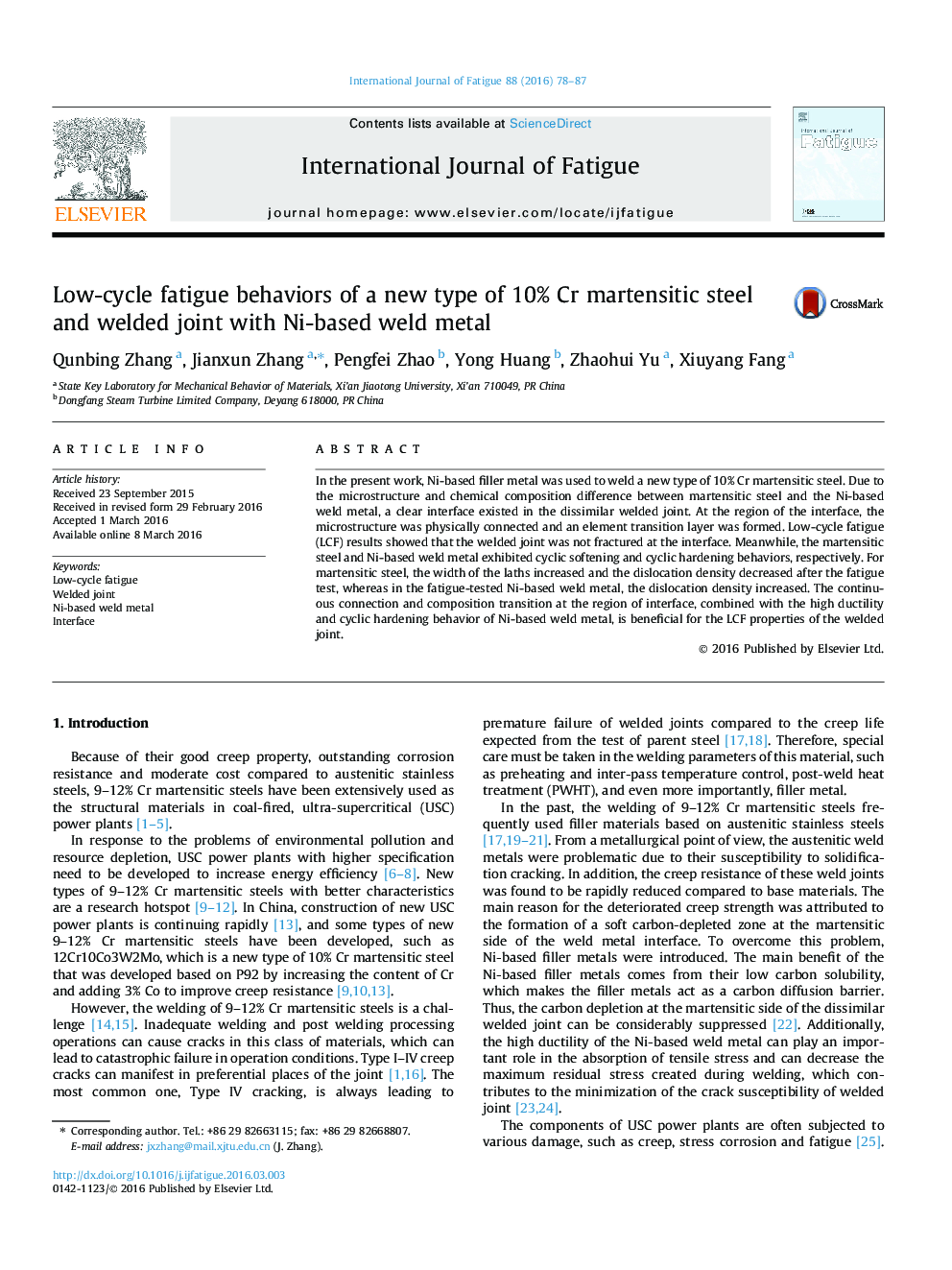| Article ID | Journal | Published Year | Pages | File Type |
|---|---|---|---|---|
| 777523 | International Journal of Fatigue | 2016 | 10 Pages |
•Low-cycle fatigue behaviors of a 10% Cr martensitic steel welded joints were studied.•The interface between martensitic steel and Ni-based weld metal was characterized.•The interface was physical connected and of well fatigue resistance.•Martensitic steel and weld metal showed cycle softening and hardening, respectively.
In the present work, Ni-based filler metal was used to weld a new type of 10% Cr martensitic steel. Due to the microstructure and chemical composition difference between martensitic steel and the Ni-based weld metal, a clear interface existed in the dissimilar welded joint. At the region of the interface, the microstructure was physically connected and an element transition layer was formed. Low-cycle fatigue (LCF) results showed that the welded joint was not fractured at the interface. Meanwhile, the martensitic steel and Ni-based weld metal exhibited cyclic softening and cyclic hardening behaviors, respectively. For martensitic steel, the width of the laths increased and the dislocation density decreased after the fatigue test, whereas in the fatigue-tested Ni-based weld metal, the dislocation density increased. The continuous connection and composition transition at the region of interface, combined with the high ductility and cyclic hardening behavior of Ni-based weld metal, is beneficial for the LCF properties of the welded joint.
